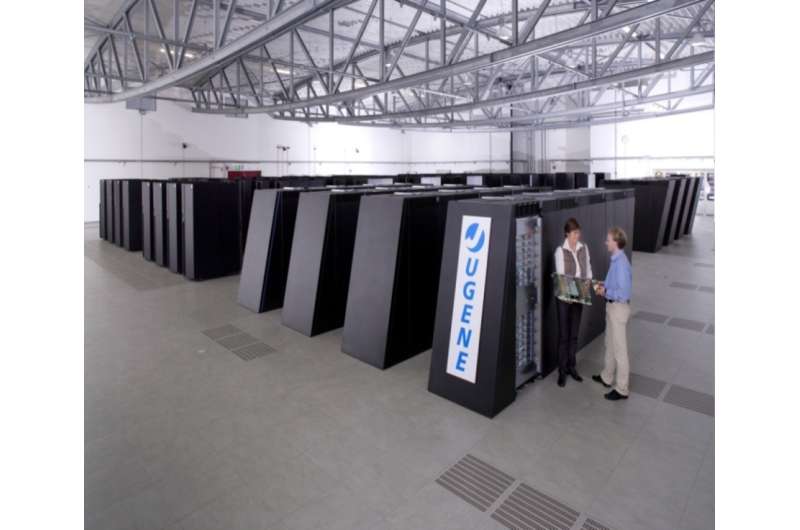Scientists suggest a PC to solve complex problems tens of times faster than with massive supercomputers

A group of physicists from the Skobeltsyn Institute of Nuclear Physics, the Lomonosov Moscow State University, has used a personal computer for calculations of complex quantum mechanics equations usually solved using supercomputers. The results have been published in the journal Computer Physics Communications.
The work was performed by senior researchers Vladimir Pomerantcev and Olga Rubtsova, working under the guidance of Professor Vladimir Kukulin (SINP MSU). According to Kukulin, the personal computer takes 15 minutes to accomplish work normally requiring two to three days of supercomputer time.
The equations in question were formulated in the 1960s by the Russian mathematician Ludwig Faddeev. They describe the scattering of a few quantum particles, representing a quantum mechanical analog of the Newtonian theory of three-body systems. The so-called "physics of few-body systems" were proposed soon after this.
This area is interesting to scientists engaged in quantum mechanics, nuclear and atomic physics and the theory of scattering. For several decades after the pioneering work of Faddeev, a key goal has been solving these complicated equations. However, due to the incredible complexity of the calculations, fully realistic interactions between a system's particles were out of reach until the development of supercomputers.
The group at SINP decided to use a new Nvidia GPU designed for gaming on a personal computer. According to Kukulin, the processor is relatively inexpensive, generally costing $300 to $500.
The main problem in solving the scattering equations of multiple quantum particles was the calculation of the integral kernel—a huge two-dimensional table consisting of tens or hundreds of thousands of rows and columns, with each element being the result of extremely complex calculations. This table appeared as a monitor screen with tens of billions of pixels, and using a good GPU, it was possible to calculate all of these points. Using the software developed by Nvidia and having written their own programs, the researchers split their calculations on the many thousands of streams and were able to solve the problem.
"We reached a speed we couldn't even dream of," Kukulin said. "The program computes 260 million complex double integrals on a desktop computer within three seconds. No comparison with supercomputers! My colleague from the University of Bochum in Germany carried out the calculations using one of the largest supercomputers in Germany with the famous blue gene architecture, which is actually very expensive. And what took his group two or three days we do in 15 minutes without spending a dime."
The desired quality of graphics processors and related software has existed for 10 years, but no one has used them for such calculations, preferring supercomputers.
"This work, in our opinion, opens up completely new ways to analyze nuclear and resonance chemical reactions," says Kukulin. "It can also be useful for solving a large number of computing tasks in plasma physics, electrodynamics, geophysics, medicine and many other areas of science. We want to organize a kind of training course, where researchers from various scientific areas of peripheral universities that do not have access to supercomputers could learn to do on their PCs the same thing that we do."
More information: V.N. Pomerantsev et al, Fast GPU-based calculations in few-body quantum scattering, Computer Physics Communications (2016). DOI: 10.1016/j.cpc.2016.03.018
Provided by Lomonosov Moscow State University




















